Hackett Hill Forest

Nature is a magical escape for me from my screen and the cluttered headspace which often accompanies it. I recently moved a short distance to Manchester, New Hampshire, and I fell in love with the forest in my backyard, so I decided to document it. Much of the forest is protected as the Manchester Cedar Swamp Preserve, and I am not affiliated with the Preserve. I'm going to talk about the forest briefly here, but I encourage you to check out my Hackett Hill Forest website to learn more.
Trails
Exploring the forest's many marked and unmarked trails has been a joy. The bulk of my project has been mapping out all of these trails and creating trail signs for the unmarked ones.

The forest has a few distinct regions, and my personal favorite is the area around the amazing Beaver Pond.
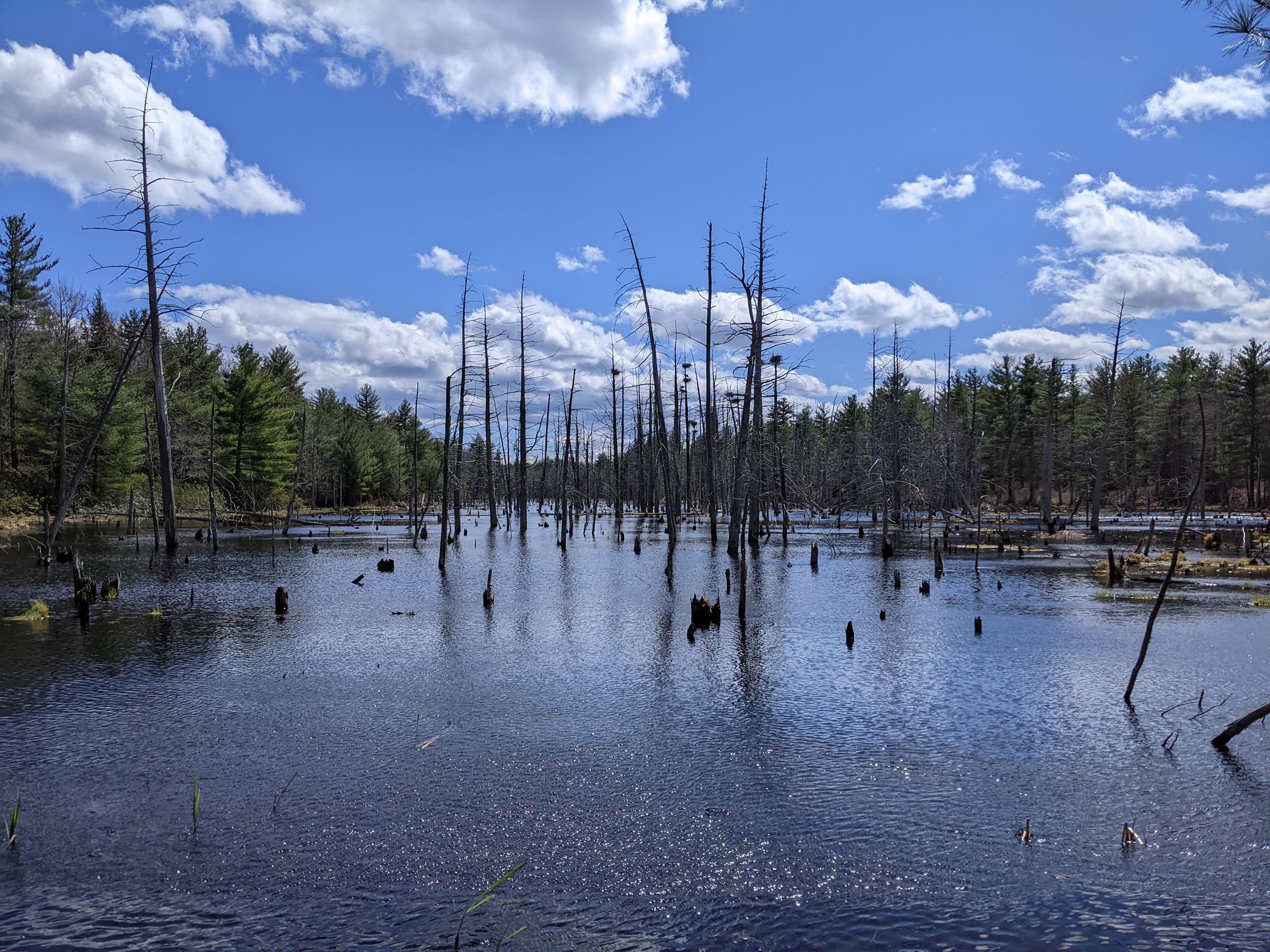
Ecology
Hackett Hill Forest has unique ecological areas: giant rhododendron cedar swamps.
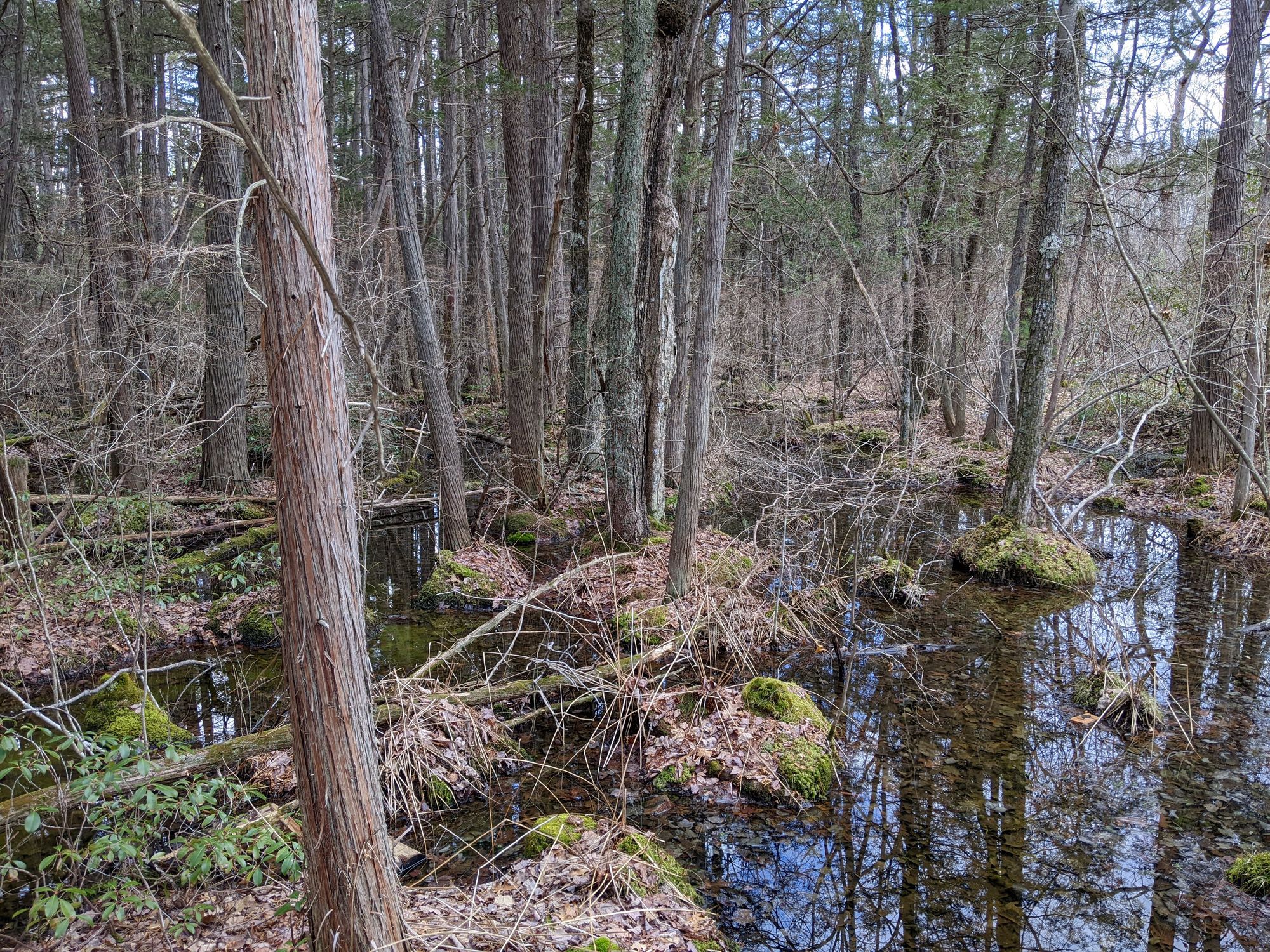
This rare combination of giant rhododendrons and Atlantic white cedars produces gorgeous scenery for walks and—along with the rest of the forest—attracts a diverse set of species. As in much of New England, deer, turkeys, and (unfortunately) ticks are notable, common animals in the forest. If you spend enough time exploring, however, you will have truly special encounters. My favorites so far have been seeing a river otter and seeing red eft newts!

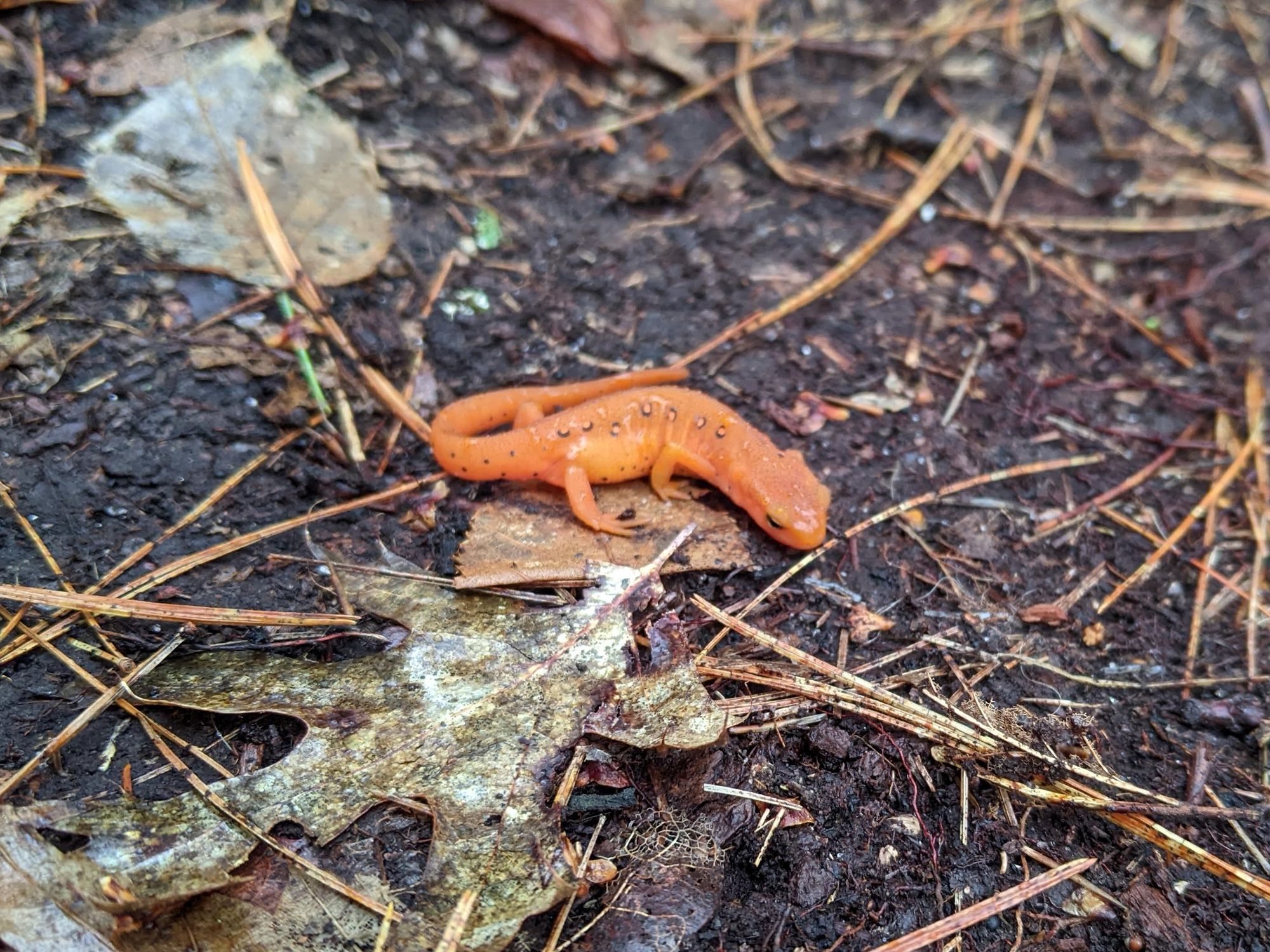
History
The forest is also unique for its history. Most notably, the University of New Hampshire began construction of a campus in the forest in the 1970s, but only got as far as the parking lots and utilities, which now lay in abandon. These Phantom Lots are quite the eerie sight, but they now serve as a pretty route for walkers, a perfect spot for trick bikers, and (unfortunately) a free shooting range for some.
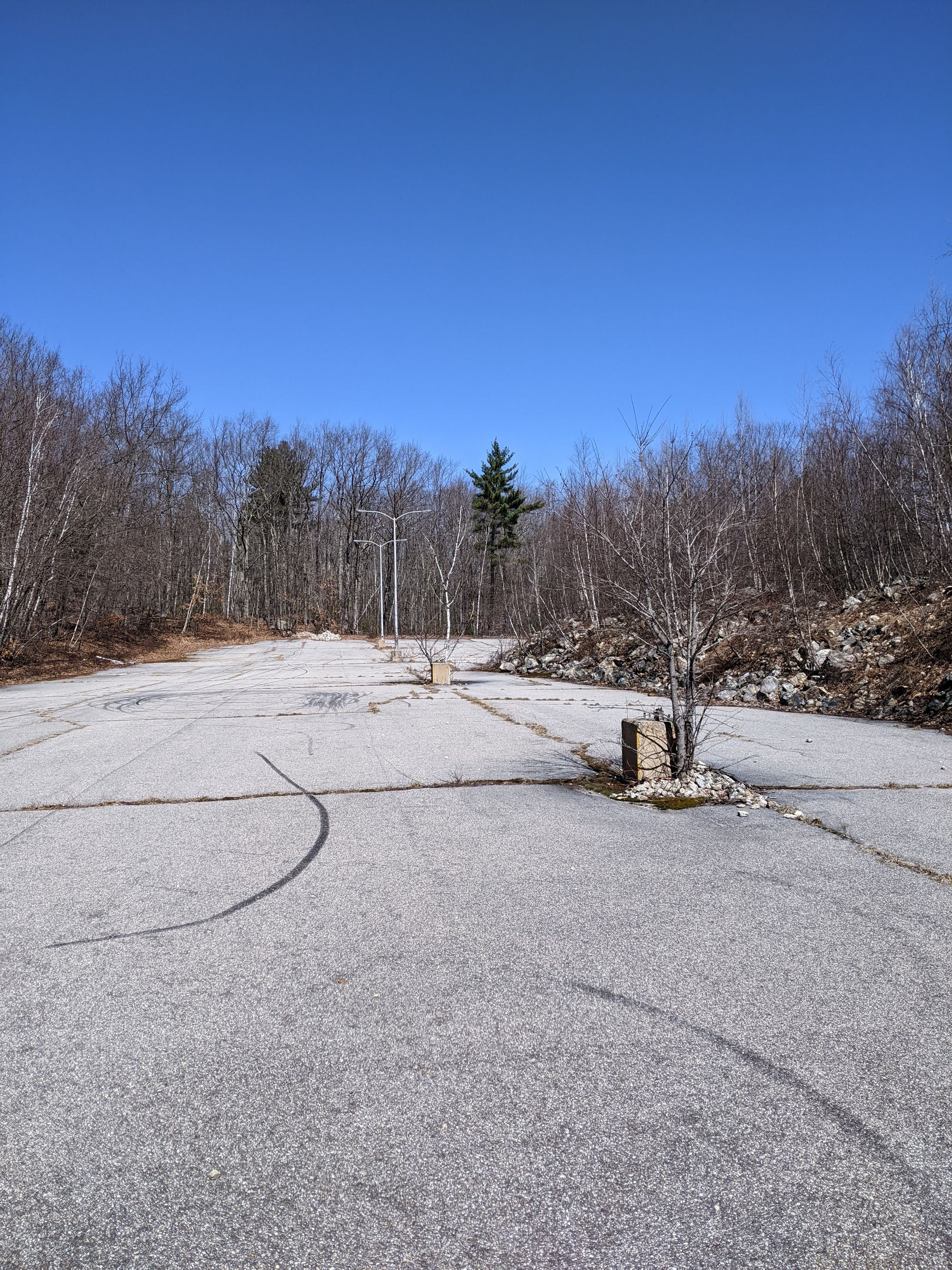
The old water tower has even been reclaimed as a 5G tower for Verizon.
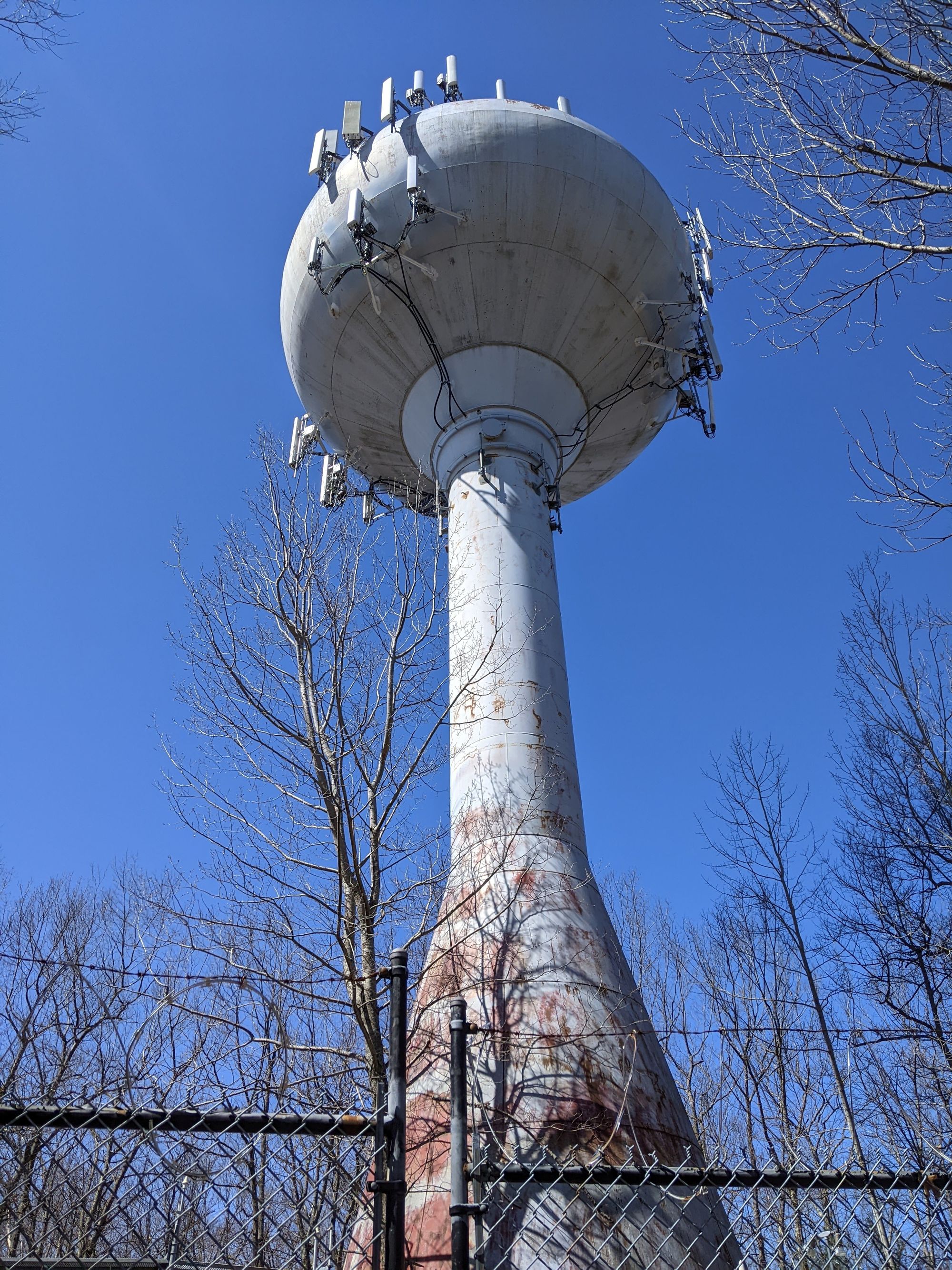
Manchester Cedar Swamp Preserve and Hackett Hill Forest as a whole are a beautiful, peaceful gem of western Manchester. If you're ever in the area, you should certainly check it out!


